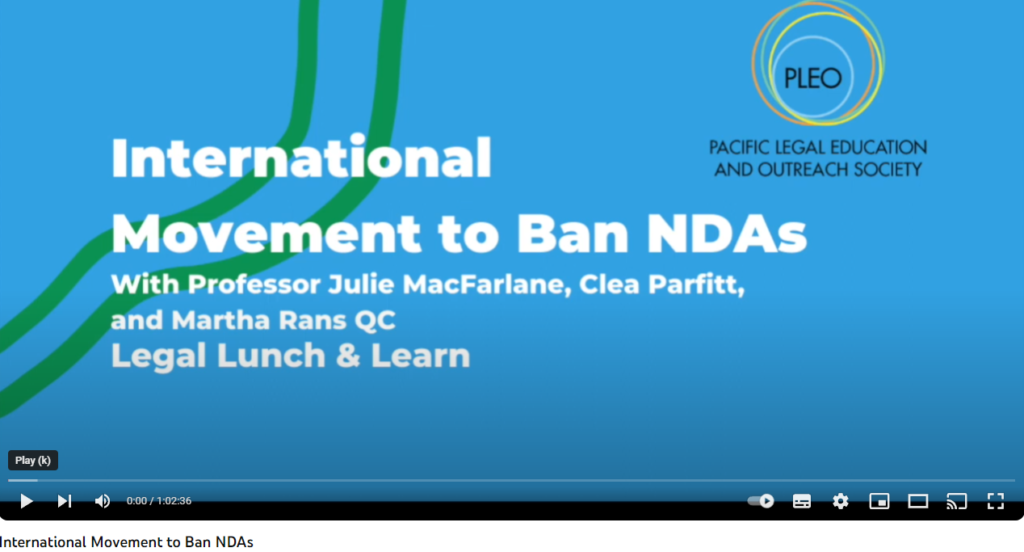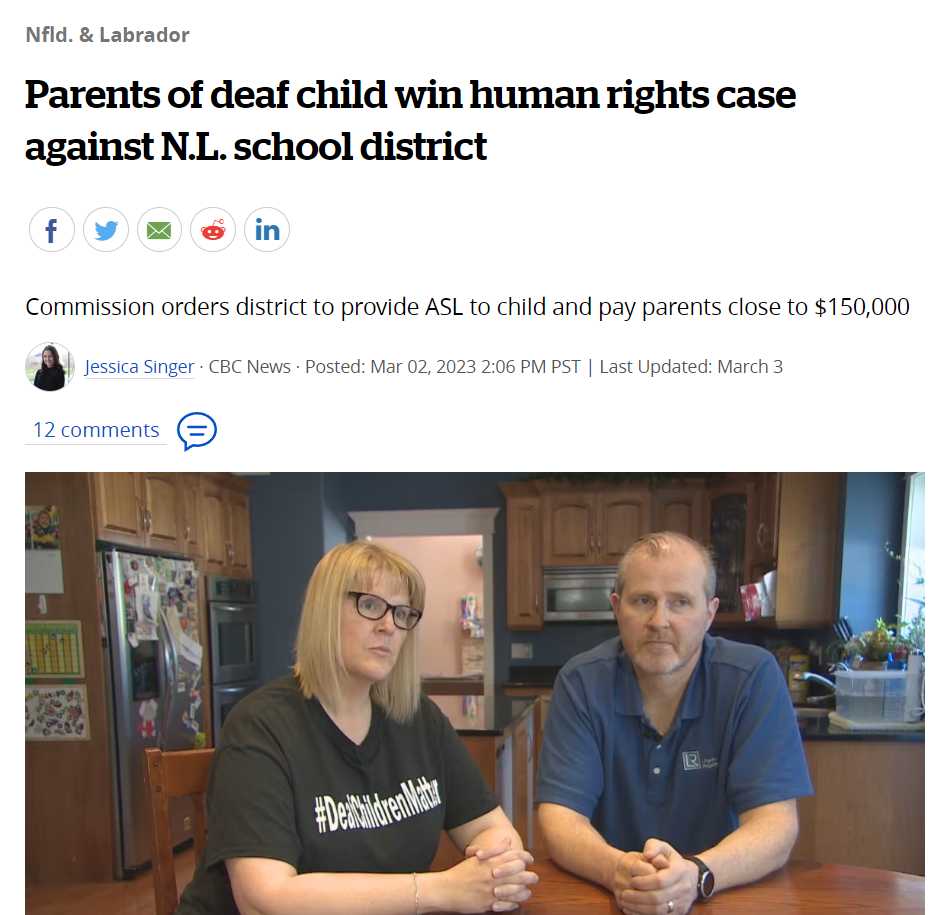This is the only completed case that I have seen by a self-represented parent in BC, in an education case. And they succeeded in a partial win.
Student (by Parent) v. School District, 2023 BCHRT 237
Some important gems in this decision that I see are:
Meaningful inquiry
[99] Next, in B v. School District, 2019 BCHRT 170, the evidence supported that the school district provided the child with the recommended supports and accommodations. The Tribunal found that it was “only with hindsight” that it was possible to say that the child could have benefited from more support: para. 81. It dismissed the complaint in part because there was insufficient evidence to demonstrate that the school district reasonably ought to have known that the child required more: para. 98. In contrast here, I have found that the District had sufficient information to trigger some kind of inquiry or response beyond asking the Student how she was doing and, assuming the counsellor did this, advising of available supports.
[100] In short, I agree with the District that the Parent and Student were obliged to bring forward information relating to accommodation. The Parent did that, when she communicated that the Student had anxiety and trichotillomania and that school was taking a significant toll on her physical and mental health. That information should have been enough to prompt a meaningful inquiry by the school to identify what was triggering the Student’s symptoms and what supports or accommodations may be appropriate to ensure she was able to meaningfully and equitably access her education. The failure to take that step was, in my view, not reasonable. As a result, the disability-related impacts on the Student, arising from conditions in her Language 10 class between April 24 and June 27, 2019, have not been justified and violate s. 8 of the Human Rights Code.
[104] In sum, I have found that the conditions in the Student’s grade 8 Language 10 class exacerbated the Student’s anxiety and trichotillomania, and that the District failed to take reasonable steps to investigate and address those conditions during the period between April 24, 2019, and June 27, 2019 (the last day of school). I find this is a violation of s. 8 of the Human Rights Code, and warrants a remedy, which I address below.
Around self-advocacy for children with invisible disabilities:
[90] Generally, it is the obligation of the person seeking accommodation to bring forward the relevant facts: Central Okanagan School District No. 23 v. Renaud, 1992 CanLII 81 (SCC), [1992] 2 SCR 970. This can be challenging for children, and especially challenging for children with invisible disabilities. I agree with the Parent that children who require accommodation in their school are in a different situation than adults seeking accommodation. Though they have a role to play in the process, that role will be age and ability-specific, and the burden cannot be on a child to identify and bring forward the facts necessary for their accommodation.
IEP – For a Child with Generalized Anxiety Disorder and Trichotillomania
[59] This ends the period of this complaint. However, it is important to note that, in the Student’s grade 11 year, the school developed an individual education plan, or IEP, for her. This IEP set out the Student’s strengths, learning preferences, and goals. It identified specific supports for the Student, including flexible due dates, ensuring the Student was not put on the spot in class, reducing workload whenever possible, providing a quiet learning environment, and frequent teacher check ins. It also established that the Student would meet bi-monthly with the school counsellor to work on her goals. The Student’s grade 11 counsellor explains that she saw the IEP as a way to reduce the burden on the Parent and to support the Student to advocate for herself. From the Parent’s perspective, this was a welcome development that should have been done much sooner.
[7] In this case, there is no dispute that the Student has disabilities, namely generalized anxiety disorder accompanied by trichotillomania (hair pulling). She is protected under s. 8 of the Human Rights Code from discrimination in her education. This complaint is about the Parent’s allegation that the symptoms of the Student’s disabilities were exacerbated in grades 8 and 9 because of her experience in Language 10 and Language 11, and that the District failed to accommodate her disability-related needs in those classes.
** Even without a designation at the time, she is still protected under the Human Rights Code.
Mental Health Stigma – Failure to Identify Diagnosis
[34] The Parent did not see this email at the time. From her perspective, the email was not adequate to appropriately communicate the scope of the Student’s school-related needs. It did not fully communicate what the Parent had told the counsellor, and what she had expected would be passed along to the teachers. She felt it was also not realistic to think that the Student would approach a teacher and ask to be excused; in fact, this was not an option that it seems the Student ever exercised. In the Parent’s view, the failure to identify the Student’s diagnoses perpetuated the silence and stigma of mental health and undermined the Student. The message contrasts, for example, with the communication that the Parent sent to the Student’s teachers at the start of her grade 9 year, which said:
Communicating and providing evidence of a diagnosis
[13] In light of the Student’s barriers in advocating for herself, the adults in her life have had to take on a more proactive role. The Parent’s open and active communication has been critical to ensuring that the Student’s needs are recognized and met in school. Throughout the Student’s education, the Parent has let her schools know about her disabilities, and that she may require monitoring because she is unlikely to proactively seek the support she needs.
[14] There is no dispute that, due to the Parent’s advocacy, various individuals within the School District were aware of the Student’s diagnoses before and during the period of this complaint. For example, in the spring of grade 7, the Parent provided the elementary school with a note from the Student’s psychiatrist confirming that the Student had a “long-standing diagnosis of General Anxiety Disorder”. At the Parent’s request, this note was placed in the Student’s school file.
** This is a very important aspect as this ensures that a district has a duty to accommodate.
From the Human Rights Clinic Blog, Stress, Anxiety and the Duty to Accommodate, they explain…
“However, she did not provide any medical information that said she had a mental disability.
The Tribunal dismissed Ms. Matheson’s complaint, stating that “an essential element of a complaint of discrimination in employment on the basis of mental disability is proof that the complainant either had a mental disability… or was perceived to be mentally disabled by the employer.”
Here is Ms. Matheson’s case.


